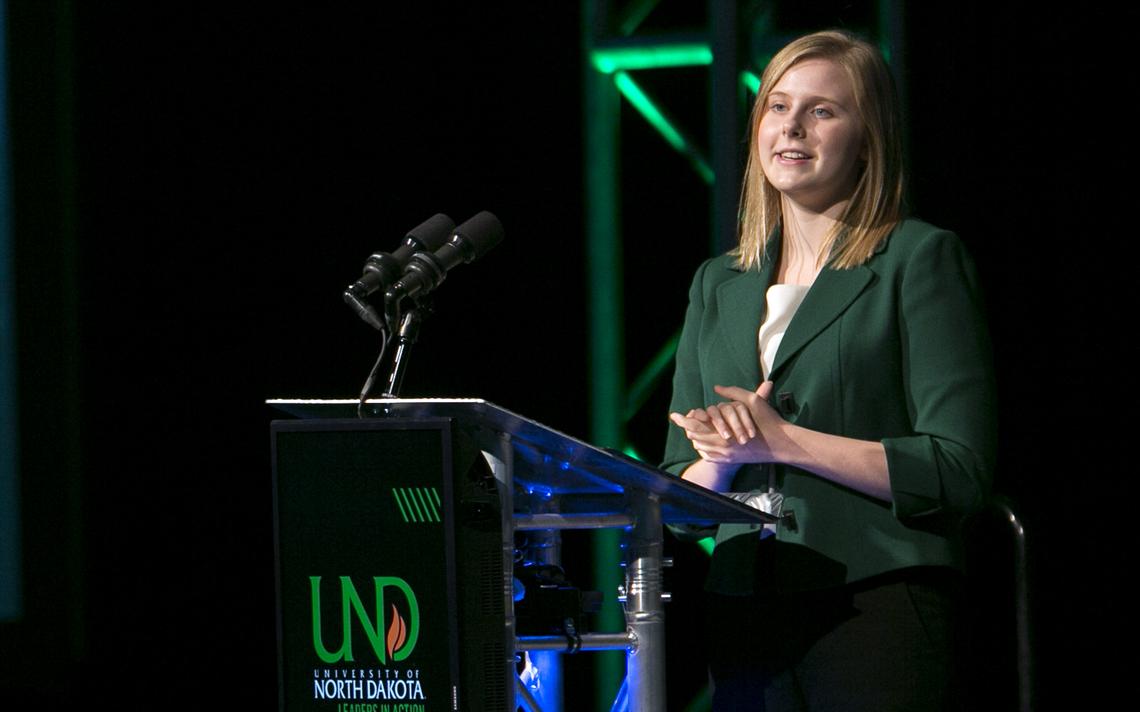N.D. – Gov. Doug Burgum has appointed UND student Gracie Lian to a one-year term as the student representative on the state Board of Higher Education.
Lian, a Grand Forks native, is a graduate student at UND and is a master’s of public administration candidate. She has served as president of the North Dakota Student Association and student body president for the UND Student Government Association.
“Gracie’s experience in leadership positions and work with policies and procedures of the (North Dakota University System) and (State Board of Higher Education) make her well-suited to represent students and influence the future of North Dakota’s higher education system,” Burgum said.
Lian’s term on the board begins July 1.
“I am incredibly honored to have been chosen as the student member of the State Board of Higher Education,” Lian said. “I look forward to continuing to work with students, NDUS faculty and staff, administrators and the other members of the State Board of Higher Education to grow our university system into the future.”
As the student representative on the board, Lian also will be able to vote on various SBHE matters. The student member typically serves on the academic and student affairs subcommittee as well.
As the most recent president of the North Dakota Student Association, Lian spoke often to lawmakers during the recently-finished legislative session about various student issues around the state, including the university system’s budget.
Burgum expressed his gratitude to current student member Erica Solberg, a student at Williston State College, for her service on the board.
Lian is the second UND student to serve on the board in recent years. Kaleb Dschaak previously served in the role from July 2019 through the first half of 2020.
The Board of Higher Education has eight voting members appointed by the governor, including one student member, and two non-voting members. The board oversees the system’s 11 public colleges and universities.


